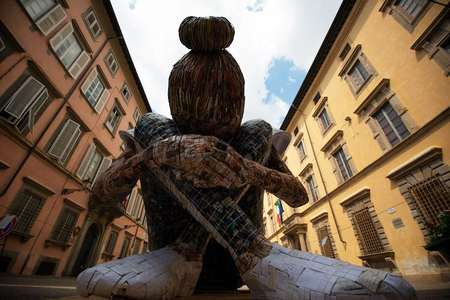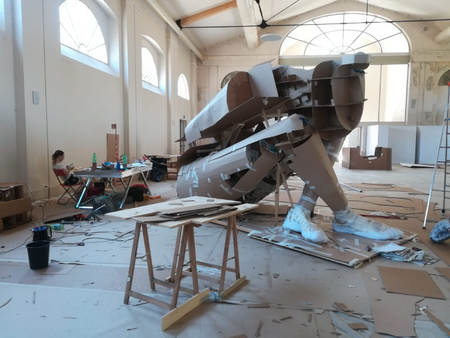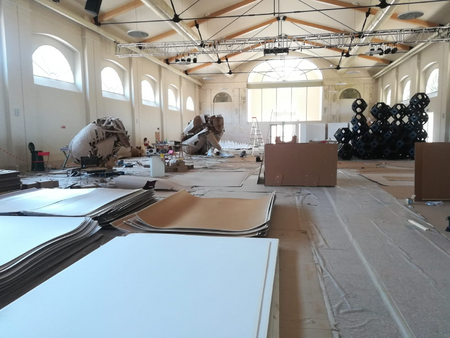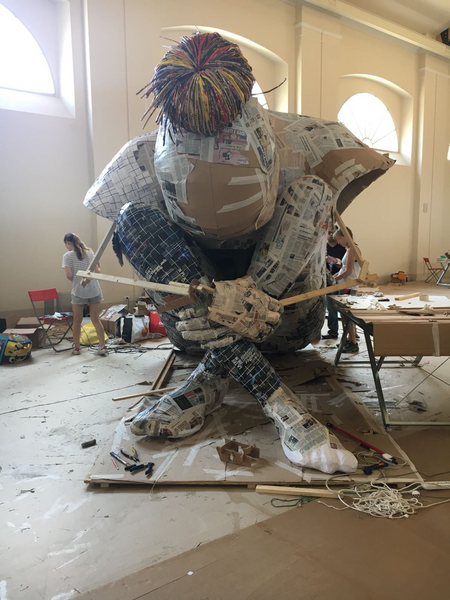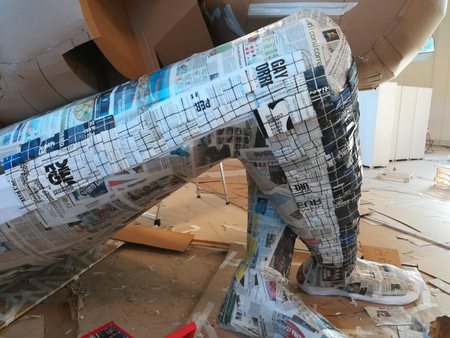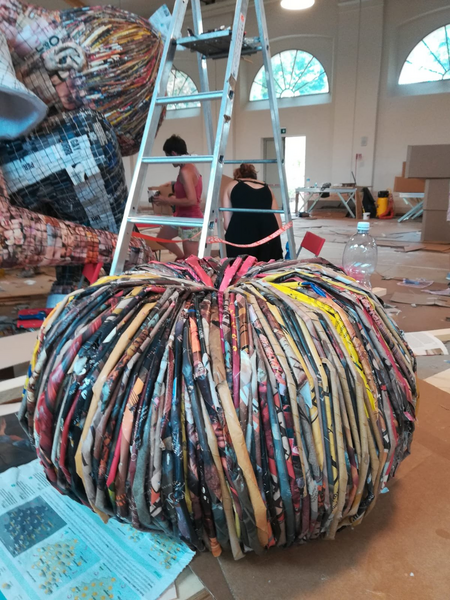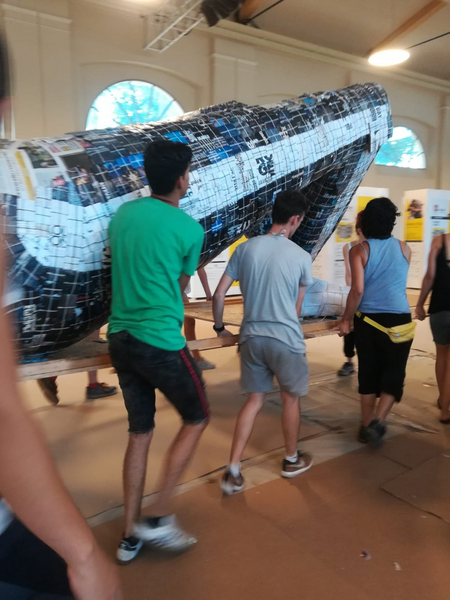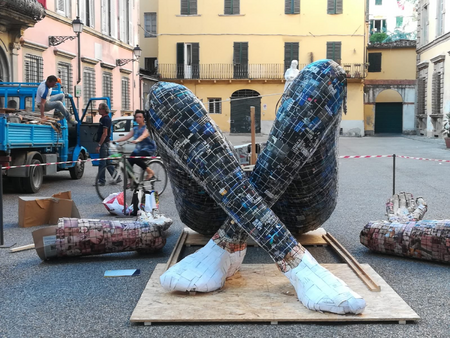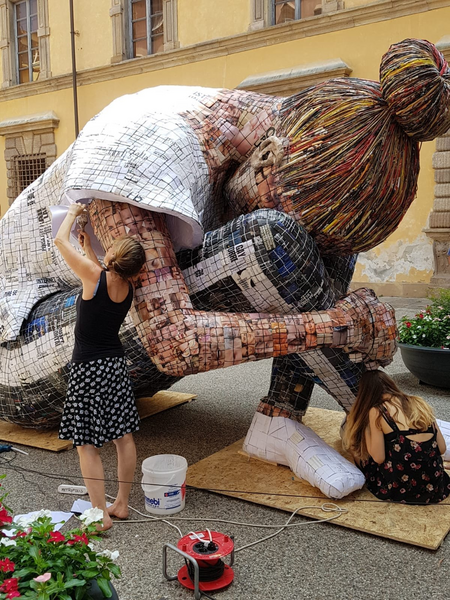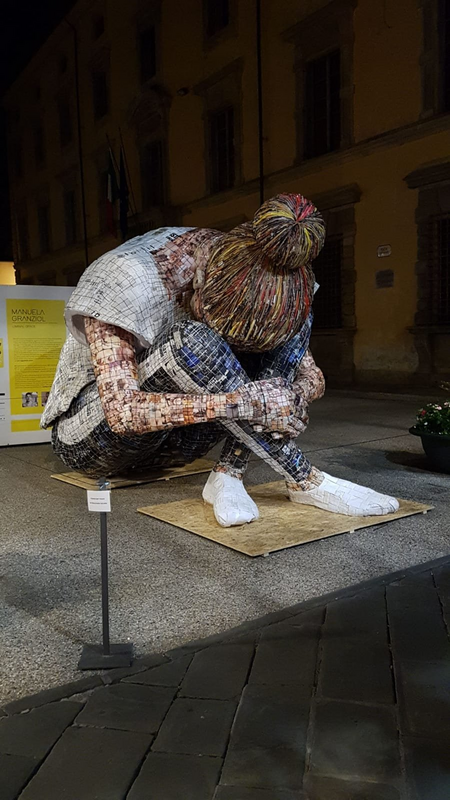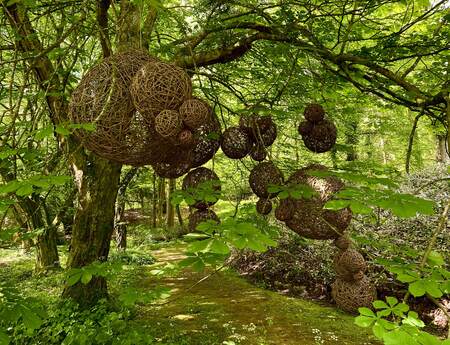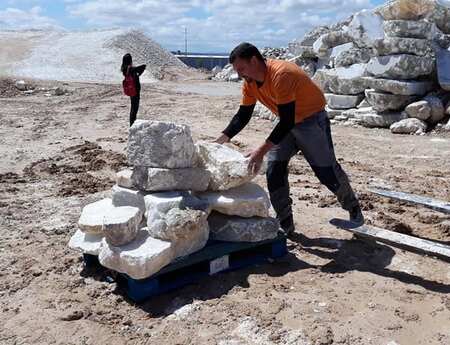Paper Sculptures in the Biennial in Lucca
The Lucca Biennial art exhibition, now in its ninth edition, has changed its name and format and is now reaching a larger, more international public. This is thanks to a extensive exhibition program dedicated to "paper art", design and architecture which also includes workshops for children and debates. Among the participants, one of the most photographed artists is our member Manuela Granziol who we recently interviewed.
The fact that sculpture in Italy is experiencing a period of great activity is something that many experts and enthusiasts have noticed in recent years.
The absence of a prestigious event like the Carrara Biennial, abruptly discontinued in 2010 after the memorable edition with Fabio Cavallucci, weighs heavily, but signs of interest from the public are increasing thanks to initiatives that are widespread in the area and which include the work of associations, gallery owners, museums, collectors and scholars.
This is the background for the qualitative leap that the Lucca-based Cartasia exhibition has decided to make with its ninth edition, introduced on 4 August and open until 27 September. After 14 years (the first exhibition took place in 2004) the name of the event was changed from Cartasia to LuccaBiennale. And like every self-respecting Biennial, the international dimension of the event has been accentuated.
For this edition, predominated by the theme "Chaos and silence", the organizers have decided to officially invite China; a symbolic action to include the nation that has been the custodian of the world's oldest paper tradition for over 2000 years.
Curiously, a biennial dedicated to paper (flat surface par excellence) seems to be at its best when viewing three-dimensional works. The images that the visitors of Cartasia (pardon, LuccaBiennale) will remember after their visit are certainly those of the great and spectacular monumental paper sculptures, produced thanks to the residency program offered by the organization to an international group of selected artists.
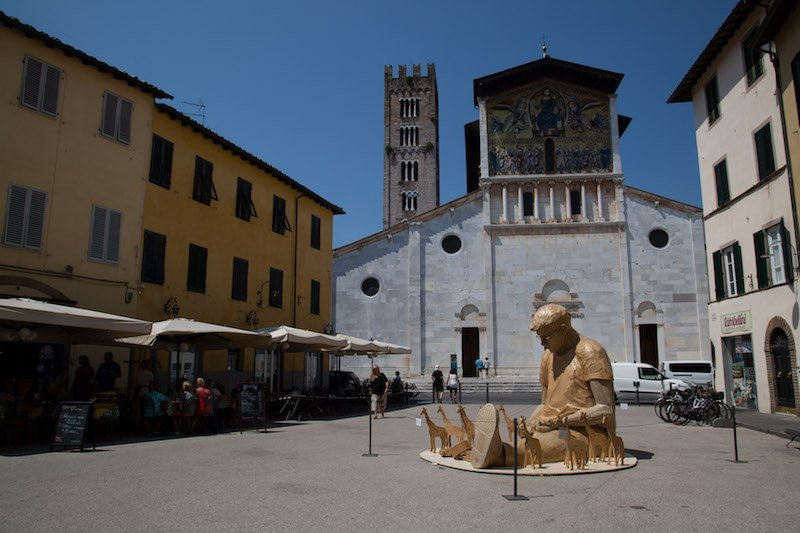
As you may have guessed, Lucca Biennial is not only about "monumental" sculpture but, in the organizers' mind, also a design and architecture show. The exhibition is divided into an outdoor area, organized in the squares of the center, and an indoor area, organized in Palazzo Ducale and Palazzo del Carmine.
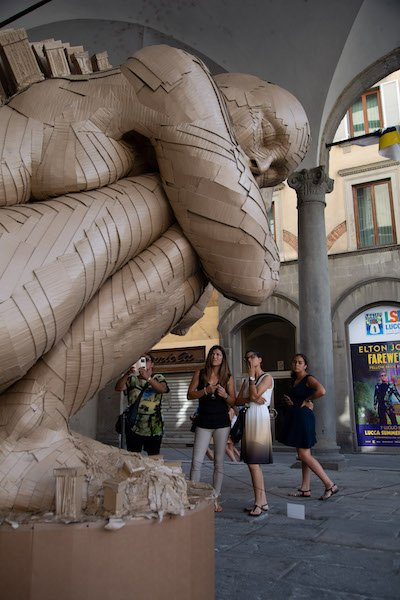
Two of the six artists who won residencies at the Lucca Biennial are also members of sculpture network. We didn’t want to miss this opportunity to interview them and chose to contact Manuela Granziol, who is present in Lucca with one of the most photographed works (editor's note: Ute Deutz, the second selected artist, had to give up for logistical reasons).
We reached Manuela on the phone and asked her some questions about her participation in the Outdoor section of Lucca Biennial.
Manuela Granziol has spent time in London and now in Varese, living and working in both places. She trained as an economist in Zurich and dedicated herself to contemporary art once she moved to England. She has a Ph.D in contemporary art and defines herself as an artist, not a sculptor because her field of action includes not only sculpture and installation, but also photography, as well as numerous excursions into the most diverse fields.
Hello Manuela! Congratulations on your work exhibited at Lucca Biennial in the Piazza Guidiccioni. - Liminal space is a monumental cardboard sculpture showing a teenage girl sitting on the floor with her face down. The surface of the sculpture is covered with a mosaic of packages made from pages of magazines.
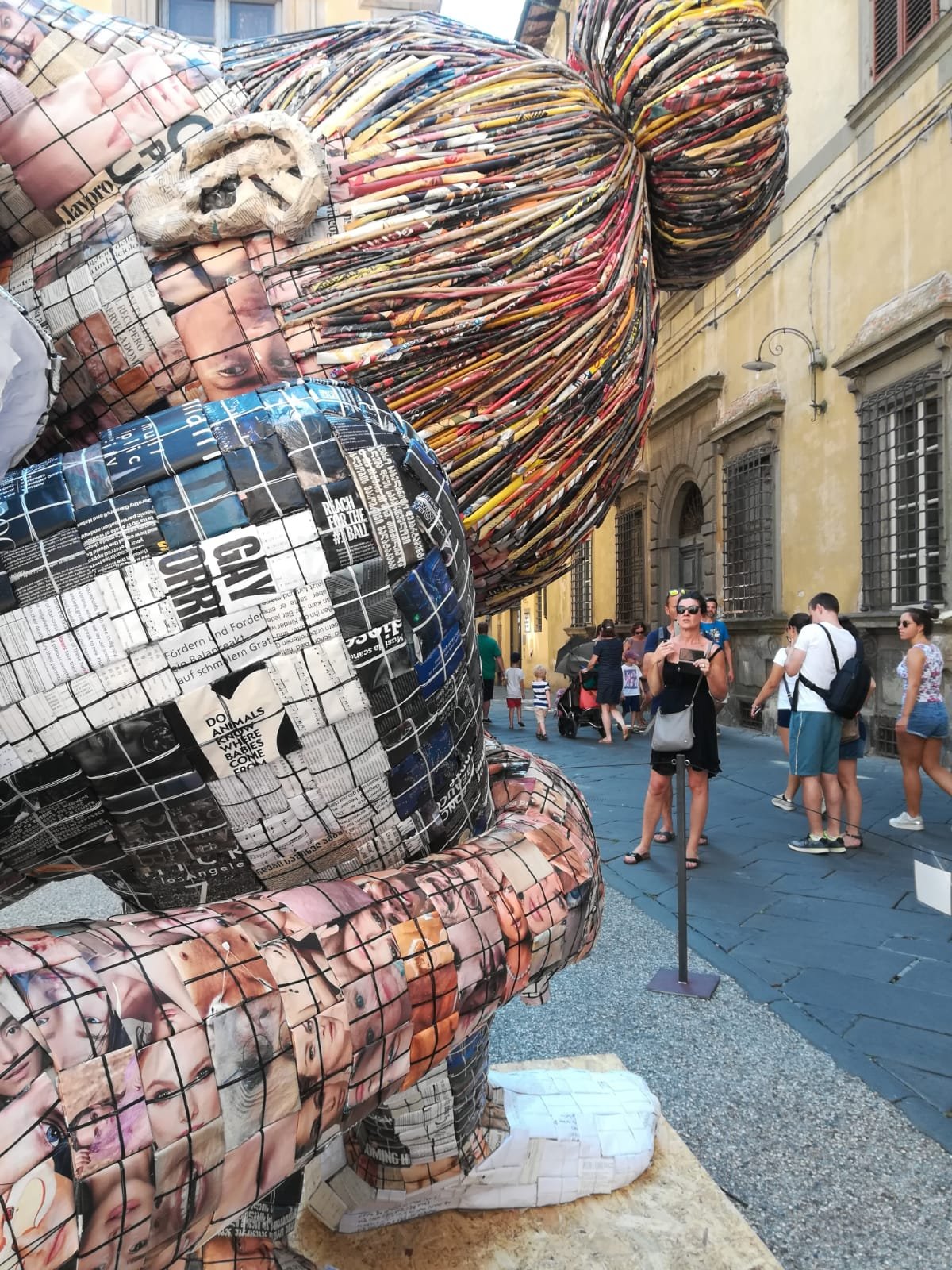
Tell us how you found yourself working here. sculpture network published the call for this Biennial, why did you choose to participate?
In September I moved from London to Varese and when I saw the call for Lucca and I submitted two projects, one for outdoors and one for indoors. I was sure they wouldn't select me because Liminal space didn't seem to me to be a feasible project in a single month. I thought I had a better chance for indoor, so I was surprised to see that I was among the semi-finalists. When I made the model I was impressed with how well it went. It was so good that it was then used for the posters and all the other advertising materials for the event.
Could you tell us what your work process was? Many sculpture enthusiasts do not know much about the possibilities offered by paper as a sculpture material.
Yes, I was also surprised by the strength of the cardboard. It was the first time I had worked on such a large sculpture, and above all, with cardboard. There were 6 other artists in the outdoor section and several of them work exclusively with paper. They are really very good, I have learned a lot from them.
Did you use a traditional armature? Did you use any particular finish or it was a calculated decay in advance?
I only used a few wooden struts for the armature, because the work must withstand any eventuality. Then there was the cardboard structure that was covered. I put lacquer on at the end of the process, but I don't think it will help much. We will see when it rains. Beforehand I covered all the small packages that were used to cover the surface of the sculpture with a coat of glue . There are 10,000 packages and they are all tied with rope - black and white. If you put the two colors of rope together, then there are more than 16 kilometers of rope in total!
Did you have a sort of consultant for this project?
Yes, during the residency we have received a lot of help - consultations with industry experts, sculptors and many students.
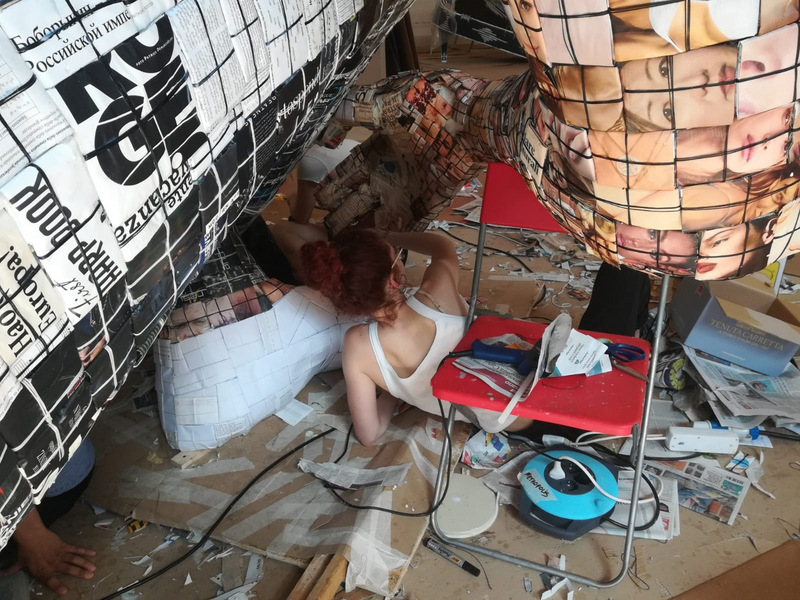
I would like to take a moment to expand the topic of our conversation: how would you describe the panorama of contemporary sculpture today? Did you get a personal idea?
It's a very interesting moment, I don't see a unique style, but a plural one. If you were to try to write a book on sculpture today, three classes would not be enough to sum up the various trends. The field of sculpture is far too wide. I'm interested in fragmented things and since sculpture is so fragmented it's a field from which really interesting new ideas are born.
I believe that our readers would love to hear your opinion, as an artist, about the Lucca Biennial. What do you like best about it? What inspired you?
For me, the most beautiful thing was to see the monumental works in situ and the two indoor exhibitions. As outdoor artists we only heard about them while we were busy working outside. The technical level and the creativity expressed are impressive. Despite the diversity of the various works, there is a common thread between the two exhibitions that I found very fascinating. I also liked Gianfranco Gentile's performance on the theme of migrants and the two days of talks, which I found very interesting.
As far as work processes are concerned, it has been very tough for me. In addition to the creation of the large cardboard sculpture there was a phase of fatigue while working on the mosaic. It made it in just a week, working day and night, despite the fact that I had planned two weeks of work.
I had other difficulties in translating from small to large. The people who go to Lucca do not see the small sculpture and therefore do not realize where this comes from. At least you can get a vague idea of it by looking at the photo on the event poster.
You have mentioned two timeless themes, classics: fatigue when working in sculpture and the problem of translations or enlargements. Usually we talk about it thinking about the tradition of marble: Michelangelo, Canova, Wildt. It's nice to combine certain themes with a plastic genre as fresh as paper sculpture. The problem of translation is both an advantage and a risk that the sculptor has to take. It's part of the game.
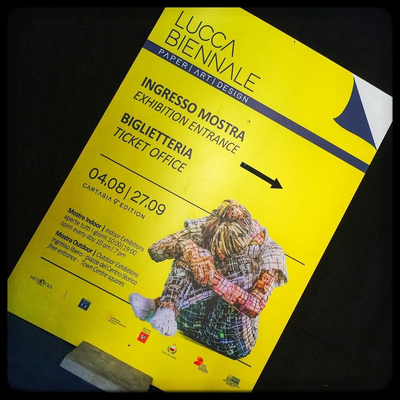
As an artist what is your relationship with the contemporary art system?
Frankly, as an artist I'm annoyed by the fact that I have to present a CV. My work is not sold easily, so I'm not that interesting for a gallery. This is also because I always choose techniques that require a very long time and are very labor-intensive. I could have chosen a sculpture made only of cardboard ... instead I made my life complicated by choosing to apply 10,000 packages - moreover they are all different sizes. This is a process that takes an eternity. Even when I take photographs, the photos are knit together and I need about six months to do one of these knitting jobs.
As an artist wouldn’t you be interested in appearing at specialized art fairs such as Sculto in Spain, Milano Scultura, or in Karlsruhe where they have a section dedicated to sculpture?
I have nothing against galleries and fairs; on the contrary, the more my work is exhibited, the more I can communicate with others. But my works are difficult to sell, so I just don't think it will happen. For example my work Inferno with the terrible photos of dead people in Iraq. Who wants to hang such a work in his flat? I wouldn’t want it either!
How do you think that a network like ours can help the development of sculpture and sculptors in particular?
Since I joined the sculpture network (less than a year ago, I'm a new member) many more people have visited my webpage. Also when I was applying I wrote "member of sculpture network" ... well, in my opinion it helped. Since I am new in Italy, I would like to make new contacts with sculptors, organize an exhibition and repeat in Italy what I had managed to build in England. I still have my contacts in the UK, but I think I will take advantage of sculpture network to increase the opportunities I have to meet new people.
I am sure that you will find the right people for new projects in Italy as well. Thank you very much for sharing your experiences and thoughts. You are a very interesting artist to listen to.
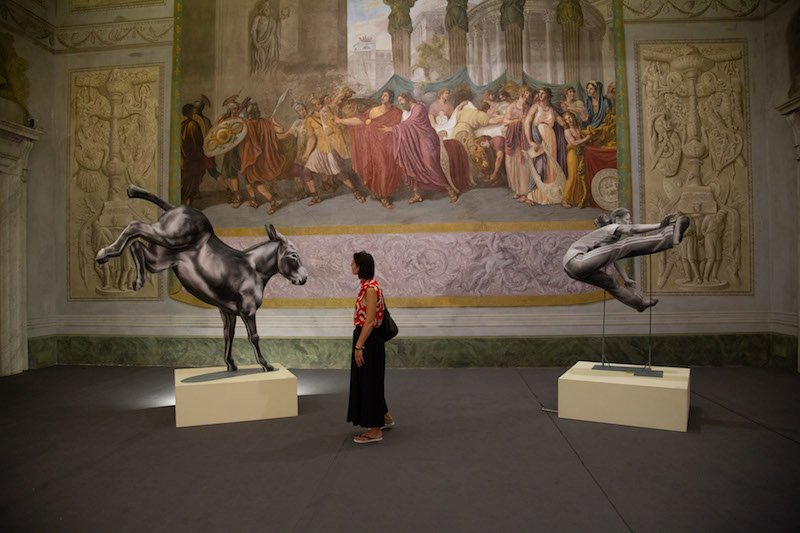
We invite all readers to treat themselves to a day in Lucca to see Manuela’s work. There is time until September 27 and you can see not only Manuela’s work, but also the works of artists from around the world, including the various winners of the residency specifically targeted for the monumental outdoor exhibition. These include veteran James Lake (Paperman) and Slovakian artist Jakub Novak (Living Space), Franco-Peruvian artist Eugenie Taze-Bernard (Silent shell, chaotic shell), Chinese artist Wu Wai Chung (No more messages), Indian artist Ankon Mitra (Images and sounds of the cosmos) and the Americans of Dosshaus (The Path of Paradox).
Cover picture photo: Alessandro Casalini
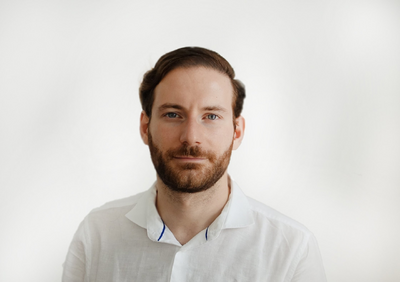
Author: Nicola Valentini
Italian artist historian specialized in contemporary sculpture and new technologies recently joined our team in Munich for an internship.
